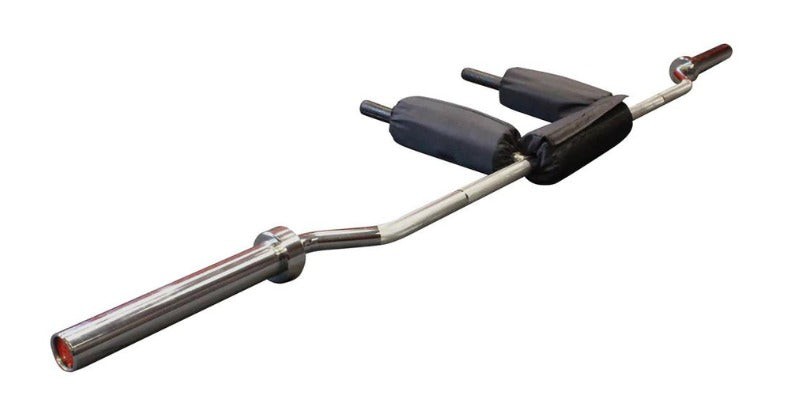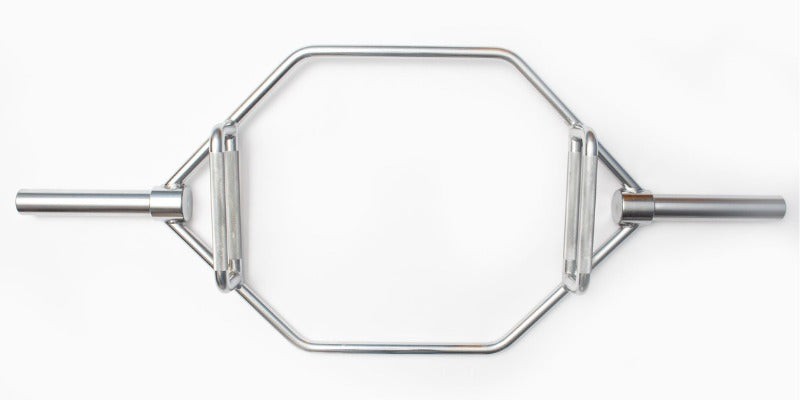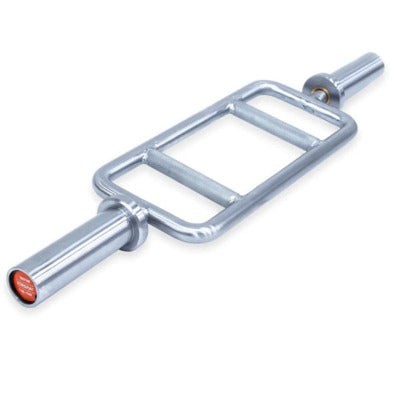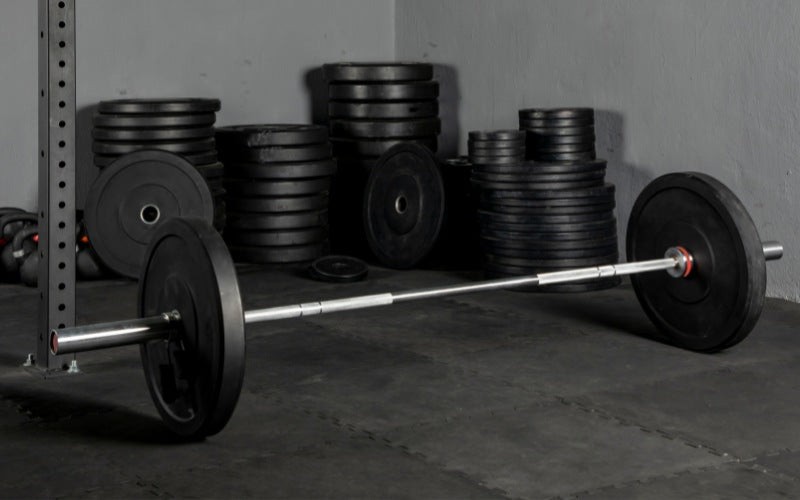Tracking your progress in weightlifting is crucial for achieving your fitness goals. To accurately monitor your strength gains, understanding the starting weight of your barbell is essential. If you’re wondering, “How Much Does The Bar Weigh?”, you’ve come to the right place. This comprehensive guide breaks down the weights of various barbells, ensuring you always know exactly how much you’re lifting.
| ## The Quick Answer |










The most common barbell you’ll encounter in gyms typically weighs 45 lbs (20 kg). These standard Olympic barbells are constructed from steel, measure approximately 7 feet in length, and feature smooth sleeves at each end for loading weight plates. However, the fitness world offers a diverse range of barbells, each designed for specific purposes and with varying weights. |
Explore Barbell Weights by Type: Quick Links
Navigate directly to the barbell type you’re interested in to learn about its weight:
What Exactly is a Barbell?
For those new to strength training, a barbell is a fundamental piece of equipment used in various disciplines, including weightlifting, powerlifting, bodybuilding, and strongman competitions.
A barbell is characterized by its long, rigid bar, typically ranging from 4 to 8 feet in length. The diameter of the bar can also vary depending on the type. A key feature of barbells is their design to accommodate weight plates on the outer ends, allowing users to customize the load to match their strength and training goals. This adjustability is what makes barbells incredibly versatile for progressive overload and strength development.
Related Reading: Barbell vs Dumbbell: Which is Best for Your Workout?
Decoding Different Types of Barbells and Their Weights
The barbell family is quite extensive, with each type engineered for specific exercises and training styles. Consequently, barbell weights can differ significantly. Let’s explore the most common types and their standard weights.
Standard Barbell Weight (1-Inch Spinlock)
Weight:
5ft bar = 12.8lbs (5.8kg)
6ft bar = 15lbs (6.8kg)
Standard barbells are characterized by their 1-inch diameter straight bar and compatibility with weight plates featuring a 1-inch hole. These barbells are often found in studio classes like body pump and are a budget-friendly option for home gyms.
Many standard barbells are designed with threaded ends and spinlock collars (nuts) to securely hold weight plates in place during workouts. This spinlock mechanism is a defining feature of this type of standard barbell, making them safe for home use.
Olympic Barbell Weight
The Olympic barbell is the gold standard in most commercial gyms. Typically, a men’s Olympic barbell is 7.2 feet (2.2 meters) long and weighs 45lbs (20kg).
These barbells are incredibly versatile, suitable for a wide range of compound exercises that form the foundation of many strength training programs. Exercises like squats, deadlifts, bench presses, overhead presses, and rows are all commonly performed with Olympic barbells.
Related: Top Weight Benches for Your Home Gym
The key differentiator between Olympic and standard barbells lies in the sleeves – the part where you load weight plates. Olympic barbells have 2-inch diameter sleeves that are designed to rotate. This rotation is crucial for Olympic lifts like snatches and clean and jerks. The rotating sleeves reduce rotational inertia, preventing the bar from excessively rotating in your hands during these dynamic movements, which could otherwise lead to injury or missed lifts.
Olympic barbells are the standard in Olympic weightlifting and powerlifting competitions. Organizations like the International Powerlifting Federation (IPF) and USA Powerlifting (USAPL) mandate the use of Olympic barbells in their sanctioned events, further solidifying their status as the industry benchmark.
Safety Squat Bar Weight
The safety squat bar is a specialized barbell, less commonly seen in mainstream gyms but gaining popularity for its unique benefits.
This bar is particularly beneficial for individuals with shoulder mobility limitations or those seeking to vary their squat mechanics. The safety squat bar features padded shoulder rests and forward-protruding handles. This design shifts the weight distribution and allows for a more upright torso during squats, which can be easier on the shoulders and lower back.
Due to its added features – the handles and bent frame – the safety squat bar is heavier than a standard Olympic barbell. Typically, a safety squat bar weighs between 60 and 75 pounds (27kg to 34kg).
For an in-depth look, explore our guide on how much a safety squat bar weighs?
Trap Bar / Hex Bar Weight
The trap bar, also known as a hex bar or shrug bar, is another specialized barbell that has become increasingly popular, especially for deadlifts.
Its hexagonal shape allows you to step inside the bar and lift weight positioned at your sides, rather than in front of you as with a traditional barbell deadlift. This design alters the biomechanics of the lift, reducing stress on the lower back and making it a potentially more accessible deadlift variation for some individuals.
The trap bar often features neutral grip handles, allowing you to grip the bar with your palms facing each other. This grip can be more comfortable and less demanding on grip strength compared to the pronated (overhand) grip used with conventional barbells.
A standard hex bar generally weighs around 54lbs (25kg). However, weight can fluctuate slightly based on the bar’s length and construction. To delve deeper, read our guide on how much a hex bar weighs.
The Multi-Grip Bar
The multi-grip bar, often called a Swiss bar, presents a unique design. Instead of a single straight bar, it features parallel bars connected by crossbars, creating multiple grip options.
Often shorter than standard barbells, multi-grip bars still possess considerable weight due to their robust construction with multiple horizontal and vertical bars.
The primary advantage of the multi-grip bar is its versatility in grip positions. The various rungs allow for different hand placements – wide, narrow, neutral, and angled – which can be beneficial for targeting different muscle groups or accommodating wrist or shoulder discomfort. Expect a multi-grip bar to weigh between 35 to 45 pounds.
Tricep Bar Weight
As the name suggests, the tricep bar is specifically designed for triceps exercises. You’ll often find these in gyms, particularly in areas dedicated to arm workouts. Skullcrushers are a prime example of an exercise optimized for the tricep bar.
The tricep bar’s design, with its angled or parallel neutral grips, allows for varied hand positions during triceps exercises. This variation can help target different heads of the triceps muscle and reduce stress on the wrists, enabling a more focused and comfortable triceps workout.
Tricep bars are similar in concept to multi-grip bars but are typically smaller and simpler in design. A standard tricep bar usually weighs around 22lbs (10kg), but slight variations in design can influence the exact weight.
EZ Bar Weight
The EZ bar (easy curl bar) is a highly versatile and comfortable barbell variation found in most gyms. Its distinctive W-shape in the bar’s midsection is its defining characteristic.
This contoured shape is ergonomically designed to allow for more natural wrist and forearm positioning during exercises. The angled grips of the EZ bar reduce stress on the wrists compared to straight bars, making it ideal for exercises like curls and skullcrushers.
The EZ bar is excellent for a range of exercises, including various biceps curls, triceps extensions (skullcrushers), and rows. Its comfortable grip makes it a user-friendly option for both beginners and experienced lifters.
Typically, an EZ bar weighs around 22lbs (10kg). However, depending on the specific model and manufacturer, EZ bar weights can range from 20 to 40 pounds.
To learn more about another specialized bar, see our guide on how much a Smith machine bar weighs.
Men’s vs. Women’s Olympic Barbells
You may notice slight differences when using Olympic barbells at your gym. Many gyms stock both men’s and women’s Olympic barbells, which have subtle but important distinctions.
Men’s Olympic Barbells:
- Length: 7.2 ft (2.2m)
- Grip Diameter: 28mm
- Weight: 45lbs (20kg)
Women’s Olympic Barbells:
- Length: 6.6ft (2.01m)
- Grip Diameter: 25mm
- Weight: 33lbs (15kg)
Women’s Olympic barbells are designed to be slightly shorter and lighter, with a thinner grip diameter. These modifications are intended to better suit the anthropometry and average strength levels of women. The reduced weight and smaller diameter can make the bar more manageable and comfortable for female lifters, particularly when learning Olympic lifts or performing higher-repetition exercises.
So, if an Olympic barbell feels slightly lighter and the grip seems smaller, it’s likely a women’s Olympic barbell.
Is Counting the Barbell Weight Necessary? Absolutely!
A common question among those new to weightlifting is whether to include the barbell’s weight when tracking lifts. The answer is a resounding yes.
Failing to account for the barbell weight significantly underestimates the total weight you’re lifting. For example, if you load two 45-pound plates on each side of a 45-pound barbell, the total weight is 225 pounds (45 lbs (bar) + 2 45 lbs (plates) + 2 45 lbs (plates)). If you only counted the plates, you’d mistakenly believe you were lifting only 180 pounds, overlooking a substantial 45 pounds – the weight of the bar itself!
Accurately tracking your lifts, including the barbell weight, is crucial for progressive overload and monitoring your strength gains over time. It provides a true representation of your lifting capacity.
Don’t Forget Weight Plates and Collars
While barbells provide the foundation of your lift, weight plates are the building blocks for increasing the load. You’re likely familiar with the standard 45-pound plates, but plates come in a variety of weights to allow for incremental increases.
Common weight plate denominations include 2.5, 5, 10, 15, 25, 35, 45, and even 55 pounds in specialized powerlifting gyms. This range allows lifters of all levels to progressively add weight as they get stronger, ensuring continuous progress.
Don’t overlook barbell collars or clips. These are used to secure weight plates on the barbell sleeves and prevent them from sliding off during lifts. While often lightweight, some heavier collars can add up to a pound per collar, totaling 2 pounds to your lift when using a pair. While seemingly insignificant, every pound counts towards your total lifted weight.
What’s the Barbell Weight at My Local Gym?
In most standard commercial gyms, such as chain gyms and fitness centers, you can generally expect to find men’s Olympic barbells. These will typically be 45 pounds (20kg) and around 7.2 feet long.
Conclusion
The world of barbells is diverse, with numerous types each designed for specific training needs. Understanding that “how much does the bar weigh” is not a one-size-fits-all answer is crucial for effective and accurate weightlifting.
Choosing the right barbell depends on your fitness level, training goals, and the exercises you plan to perform. By using this guide, we hope you now have a clear understanding of different barbell weights and can confidently calculate your total lifted weight, accurately tracking your strength journey.